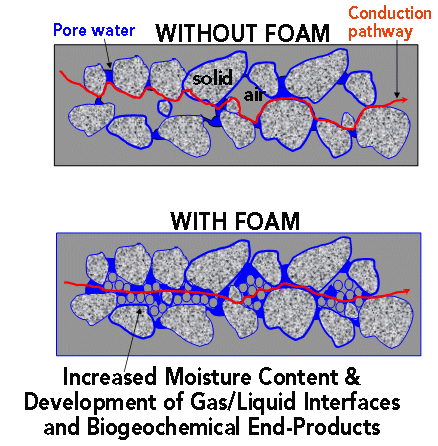Advanced Monitoring Approaches for Contaminant Behavior
Integral to the successful deployment of any remedial technology is the ability to monitor, and eventually predict, the delivery, emplacement, and long term performance of the treatment. In general, such monitoring is complicated by subsurface heterogeneity and by the disparity of scales across which hydrological properties span, because these properties control the distribution of the remedial amendment and thus the location of subsequent transformations. Conventional techniques for subsurface hydrobiogeochemical monitoring rely on wellbore-based approaches to collect samples or make measurements. Because of their limited spatial extent, these methods often cannot provide sufficient information to describe key controls on subsurface flow and transport. This is especially true in the vadose zone, where vertical infiltration pathways can form as a result of variable saturation and heterogeneity and where fluid recovery for sampling can be challenging.
The inability to conventionally characterize controlling properties and induced processes at a high enough spatial resolution, and over a large enough spatial extents, prohibits accurate, real-time assessment of deployment, emplacement, and performance for in situ remedial technologies for deep vadose zone treatments. To this end, we are advancing the application of radar and complex resistivity

Briefly, radar methods are expected to provide information about the dielectric constant, which is sensitive to soil moisture and may also respond to the reactive foam. Complex resistivity measures both the frequency-dependent electrical conductivity and induced phase response of the media to an external current. The electrical conductivity is expected to be useful primarily for monitoring the change in saturation and total dissolved solids (TDS) associated with the reactive foam.
Finally, microbial markers will be used as a long-term monitoring approach to assess the effectiveness of remedial treatment and reaction of community dynamics. This profiling can be performed rapidly at the point source, and at downstream gradients where microbial community changes may occur in advance of measurable geochemical metrics; thereby, providing a highly sensitive "warning" of possible changes in contaminant plume behavior or the need for additional in situ remediation.
